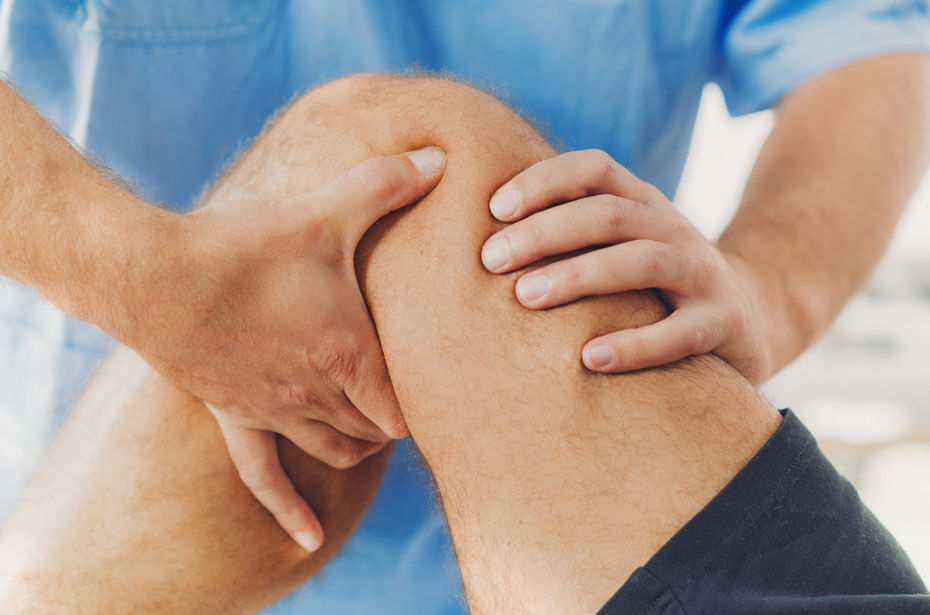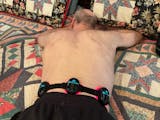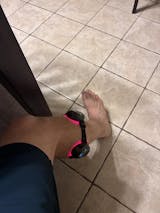Knee health plays a critical role in our daily activities, whether it's walking, running, or even standing for extended periods. Many people, especially in the U.S., experience knee pain and discomfort, often due to aging, injury, or overuse. Fortunately, there are multiple ways to strengthen the knees and improve overall joint health. In this article, we’ll discuss various exercises, lifestyle changes, and the benefits of using medical-grade red light therapy devices to promote knee strength and reduce pain.
Why Knee Strength is Important for Overall Health
The Role of Knees in Mobility and Daily Activities
Your knees are essential for nearly every movement you make. They support your weight and act as the pivot for walking, running, bending, and even standing still. Strong knees allow you to maintain mobility and perform everyday tasks without discomfort. Without proper knee strength, activities that once felt easy can become difficult and painful.
Common Knee Issues in the United States
In the U.S., knee problems like osteoarthritis, ligament tears, and muscle imbalances are common, especially as people age. Weak knees can result in chronic pain, swelling, and limited movement. Strengthening your knees helps prevent these issues and improves quality of life, ensuring that you remain active as you age.

The Impact of Weak Knees on Long-Term Health
Weak knees can lead to a chain reaction of problems. When your knees aren’t strong, you may adjust your walking or posture to avoid pain, which can strain other joints in the body, such as the hips and back. Over time, this can lead to further injuries and discomfort. Strengthening your knees is essential for long-term joint health and overall well-being.
Top Exercises to Strengthen Your Knees
Leg Extensions and Squats for Building Strength
Leg extensions and squats are two of the best exercises for targeting the muscles around your knees, especially the quadriceps. These exercises help build strength in the front thigh muscles, which support knee movement. Start with bodyweight squats and leg extensions, and as you build strength, you can add resistance with dumbbells or machines.
Lunges and Step-Ups for Mobility
Lunges and step-ups are excellent exercises for improving knee stability and mobility. These exercises also target the glutes, hamstrings, and calves, which all work together to support your knees. Start with bodyweight lunges and step-ups, and gradually increase difficulty with weights or by adding step height.
Cycling and Swimming for Low-Impact Strengthening
If you want to strengthen your knees without putting too much strain on them, low-impact activities like cycling and swimming are great options. Both exercises promote joint flexibility and help build strength in the muscles that support your knees without stressing the joints themselves.
Stability Training and Balance Exercises
Balance exercises, such as standing on one leg or using a balance board, help enhance the stability of your knees by strengthening the smaller muscles around the joint. Stability training can be especially helpful in preventing knee injuries, as it improves proprioception and coordination.

How Red Light Therapy Devices Help Knee Health
Understanding Red Light Therapy
Red light therapy is a non-invasive treatment that uses low-level wavelengths of light to stimulate tissue healing and reduce inflammation. For knee health, red light therapy can penetrate deep into the tissues, promoting circulation and reducing pain. fda approved red light therapy devices for pain are designed to provide more powerful and effective treatments compared to regular consumer-grade options.
How Red Light Therapy Works on Knee Muscles and Tissues
Benefits of Using Red Light Therapy Devices for Knee Strengthening
Red light therapy module - PRUNGO FluxGo are specifically designed to treat more severe knee conditions, providing deep tissue penetration and more intense therapeutic effects. By using a red light panel or mask, you can target the knee area directly, helping to reduce pain, enhance recovery, and promote knee strengthening over time.
Recommended Devices for Knee Treatment
If you're considering using red light therapy for knee strengthening, choose devices that are designed for medical use. Prungo’s range of products, including red light panels and red light masks, are excellent choices for targeted knee treatment. These devices offer a combination of convenience, efficiency, and powerful therapeutic benefits.
Lifestyle Changes to Prevent Knee Pain and Injury
Maintaining a Healthy Weight for Joint Health
Excess body weight places additional stress on your knees, which can increase the risk of joint pain and injury. Maintaining a healthy weight through a balanced diet and regular exercise can reduce the pressure on your knees and lower the chances of developing knee issues like arthritis or tendinitis.

Importance of Proper Footwear and Alignment
Wearing supportive footwear is crucial for maintaining proper knee alignment. Shoes with good arch support and cushioning can reduce the impact on your knees when walking or running. Additionally, ensure that your posture and gait are aligned correctly to avoid unnecessary strain on your knees.
Incorporating Stretching and Flexibility into Your Routine
Stretching is an essential part of knee health. Regularly stretching your quadriceps, hamstrings, and calves helps to keep your muscles flexible and reduces the risk of injury. Incorporate dynamic stretching before workouts and static stretching afterward to maintain flexibility and prevent tightness around your knees.
Avoiding Overuse and Resting When Necessary
Overuse is a common cause of knee pain, especially for athletes and active individuals. It’s important to listen to your body and rest when needed. If you’re experiencing knee pain or discomfort, avoid high-impact activities and give your knees time to recover.
Nutrition for Knee Joint Health
Foods Rich in Anti-Inflammatory Properties
Certain foods can help reduce inflammation in the body, including those in the knee joints. Incorporate foods like turmeric, ginger, and fatty fish (such as salmon and mackerel) into your diet to help fight knee inflammation and promote healing.
Importance of Omega-3 Fatty Acids and Collagen
Omega-3 fatty acids and collagen are both essential for maintaining healthy joints. Omega-3s, found in foods like walnuts, chia seeds, and flaxseeds, can help reduce joint inflammation. Collagen, which is abundant in bone broth and other animal products, helps to strengthen the cartilage in your knees.
Vitamins and Supplements for Joint Support
Certain vitamins and supplements, such as vitamin D, vitamin C, and glucosamine, can support knee joint health. Vitamin D helps with calcium absorption for bone strength, while vitamin C promotes collagen production for cartilage repair. Glucosamine may also help protect cartilage and alleviate joint pain.

Medical Interventions and Physical Therapy for Knees
When to Consult a Doctor or Physical Therapist
If you experience chronic knee pain or have sustained an injury, it’s important to consult a doctor or physical therapist. They can assess your condition and recommend appropriate treatments, including physical therapy, medication, or in some cases, surgical options.
Physical Therapy Techniques for Strengthening Knees
Physical therapy can play a vital role in knee rehabilitation. A physical therapist can guide you through exercises tailored to your specific needs, helping you strengthen the muscles around your knees, improve range of motion, and alleviate pain.
Surgical Options for Severe Knee Damage
In cases of severe knee damage, such as torn ligaments or advanced arthritis, surgery may be necessary. Procedures like knee arthroscopy, ligament repair, or knee replacement can help restore function and alleviate pain. However, surgery is typically a last resort after non-invasive treatments have been explored.
















Share:
How to Stretch Lower Back
How to Treat Swollen Lymph Nodes in Neck Naturally